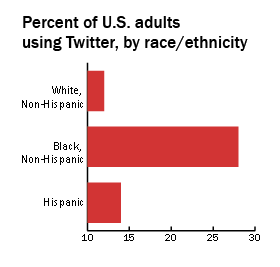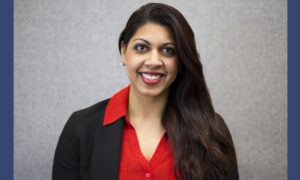Social media seem to be everywhere these days, and it’s not just kids in skinny jeans and hoodies typing madly on their smartphones. For instance, almost three-quarters of foundation leaders surveyed by the Foundation Center in 2010 thought that social media were useful in furthering philanthropic work in general, and half thought social media were useful in furthering the work of their own foundation.
Social media can advance the work of youth-service professionals in many ways. It’s a great way to engage young people who have grown up with mobile phones and the Internet, and may find them more natural sources of information and communication than landlines or newsprint.
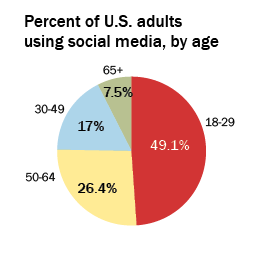
The key aspect of social media is that users are actively engaged with the media, creating new content rather than simply being passive recipients. Using social media is part of what’s often referred to as “Web 2.0.” If Web 1.0 is reading information online, Web 2.0 is creating your own blog, joining an online community, posting a video on YouTube, or tweeting your news to the world.
Although the name “social media” may imply recreational use, this tool is not just about leisure activities: Social media played such an important role in the 2011 Egyptian Revolution that some have dubbed it the “Twitter Revolution,” and social media has played a key role in the Occupy Wall Street movement, among others.
However, the desire to use the most effective and popular tools for your work may compete with anxiety in the face of unfamiliar media as well as the feeling that social media may become a huge time sink. The question, therefore, is not whether social media can be useful, but how you can harness its power to make your organization more efficient and effective.
Using social media sites is the second most common type of online activity, with 22 percent of all time online spent using social media. Facebook is the second most popular website (after Google), with 158 million unique visitors in May 2012 alone, and Twitter.com receives more than 400 million tweets per day.
While young people may be leading the way, social media use is common in other age groups as well: A 2011 study from the Pew Internet & American Life Project found that almost two-thirds (65 percent) of adult internet users in the United States use social networking sites, with young adults having the highest rate of use.
A separate Pew study found that 73 percent of Internet users ages 12 to 17 used social networking sites, and that 62 percent in this age group used the internet to find news and 31 percent to find health information.
A survey conducted by the Pew Research Center’s Internet & American Life Project found that overall, 15 percent of U.S. adults used Twitter, with usage highest among those under 30, blacks, and those with annual household incomes under $30,000, suggesting that Twitter would be an excellent way to reach out to people in those categories.
Another 2012 Pew study found that more than one-third of adults who use social networking sites use them for political purposes, including keeping up with political news, recruiting people to work on causes, finding people who share their political views, and discussing political issues. Democrats were more likely to use social media sites for political purposes than Republicans or Independents, suggesting that they would be particularly useful vehicles for getting the word out or recruiting if the target audience is believed to include a high proportion of Democrats.
CASE STUDY NO. 1: Using Social Media for Community Building, Education, Advocacy
Emily Coles is the head of communities for the Diabetes Hands Foundation, a nonprofit organization based in San Francisco, and founded in 2008 by Manny Hernandez, a Venezuelan-born electrical engineer and social media expert who was diagnosed with the disease in 2003.
The Diabetes Hands Foundation educates people about diabetes and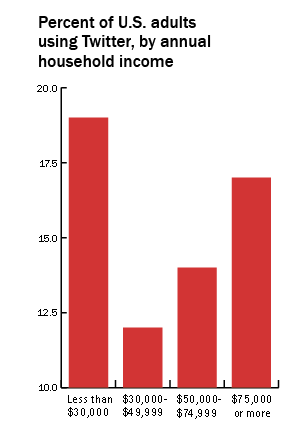
Coles was diagnosed with diabetes as a child and remembers feeling isolated, without a peer group with whom she could interact because there was no structure to help them connect. TuDiabetes strives to provide that type of community: The website provides information and links to resources as well as opportunities for users to engage, including forums, blogs, and memberships.
While the informational content is available to anyone, individuals join through a simple online interface to post or join or form groups.
Managing a community of 25,000 may sound like a daunting task, but Coles says several factors help to keep it manageable. First, only a core group of members are highly active, while many others log on occasionally, for instance to ask a specific question or to attend an online event.
Second, the fact that individuals must join before they can post to the site helps keep away spammers an restrain antisocial tendencies. Finally, TuDiabetes’s volunteer staff review the website every day, “making sure that our values of mutual respect are being upheld and intervening when they are not.” The staff removes offensive comments (e.g., those containing inflammatory statements or foul language) and refers the members responsible to the site’s Terms of Service and Our Values statements. Repeat offenders can be banned, but Coles said this has been a rare occurrence, because most members have already chosen to interact with others in a positive way.
Coles uses multiple types of social media — including Facebook, Twitter, and YouTube — to publicize events and new initiatives, and to help people engage.
She often cross-posts information in order to reach as many people as possible, for instance posting a live presentation on the TuDiabetes YouTube channel, then tweeting about it and also posting a link to the video on Facebook. It’s also possible for TuDiabetes members to sign in to the community through their accounts with Facebook, Twitter, Google, or Yahoo!
Coles prefers social media because “traditional media is a one-way flow of information, which is entirely counter to what this site is about. Our purpose is to connect people to one another, which necessarily means that they are actively engaged in the relationship, rather than purely consumers.”
Coles says TuDiabetes members have said that they particularly like the website and social media’s easy access to information and social support: “A person can go to TuDiabetes at midnight, write a post saying ‘I feel angry and sad and I need a pep talk,’ and in the morning they’ll have a slew of other people who’ve experienced the same feeling telling them to keep their chin up, that they matter and they’ll get through it.” She calls this aspect of the website “unique, powerful, and truly life-saving.”
CASE STUDY NO. 2: Using Social Media to Get the Word Out
Jane E. Stevens is the editor of ACEsTooHigh.com, a website that disseminates research about Adverse Childhood Experiences (ACE) and their lasting effects. ACEs are childhood traumas, such as sexual or physical abuse, or living in an household with an adult who is a substance user or is mentally ill. Children who experience ACEs are more likely to have behavioral problems in childhood and are also more likely to experience chronic diseases as adults.
ACEs are a relatively new subject of research — only in the past 15 years or so have the effects of ACEs on a child’s brain been discovered, and according to Stevens, a longtime health, science, and technology journalist, the newness and rapid growth of this area of research make the website, and the accompanying social network, ideal for spreading the word and helping to unite people working in this field.
ACEsTooHigh.com includes information about ACEs, the latest research, community initiatives to reduce the burden of ACES, links to resources, and a section (“Our Stories”) where visitors can share their personal stories. ACEsTooHigh uses social media through Facebook and Twitter. Stevens estimated 1,000 people follow the site, but it made a big “splash” in the crowded world of online communication when a story “went viral” with more than 366,000 page views, mostly through theACEsTooHigh Facebook site.
Stevens said ACEsNetwork is a kind of “mini-Facebook” where members can post information (including photos, videos, text posts, etc.), “friend” and message other members, and form groups around common interests.Stevens also runs a social network, ACEsNetwork, with 440 members — organizations, agencies, communities, and individuals working to implementing ACE concepts.
Stevens sees the ACEsTooHigh and ACEsConnection as “two parts of a whole” and as complementary to each other. She sees ACEsTooHigh, its Facebook page and Twitter presence as marketing and distribution networks, while the social network ACEsConnection attracts a more specialized audience and allows members to use the network as a tool, for instance, setting up a group to work on a common project.
This distinction is reflected in her choice of platforms: ACEsTooHigh usesWordPress, a blogging tool, while ACEsConnection uses Ning, a social website platform. Her ultimate goal is “to have a system that truly integrates social media and journalism,” similar to the one she worked with at WellCommons, a health and wellness site for Lawrence and Douglas County, Kan.
Within a single site, WellCommons fulfilled both the marketing/distribution and social media functions: The site included reported information, and users could also post and form their own groups.
CASE STUDY NO. 3: Social media and hiring (or getting hired)
According to the Bureau of Labor Statistics, late baby boomers (persons born in the years 1957 through 1964) held an average of 11.3 jobs from age 18 to age 46.
Most U.S. workers hold the same job for about four years, according to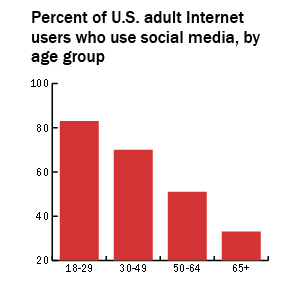
If Facebook is the social network of choice overall, when it comes to business networking and talent recruitment, LinkedIn is the world leader. As of Aug. 2, 2012, LinkedIn had more than 175 million users, making it the world’s largest professional network; users made more than 4 billion professionally oriented searches to date in 2012.
Perhaps not surprisingly, given their familiarity with social media, students and recent college graduates are the fastest-growing demographic group on LinkedIn; more than 20 million were members as of last May.
Greg S. Guest, Ph.D., is a social-behavior scientist at FHI 360, a nonprofit human development organization working in every U.S. state and more than 60 additional countries. FHI 360’s focus includes education, youth development, gender equality, and health.
Guest works primarily on research projects related to HIV prevention, reproductive health, and infectious diseases, and also owns the research consulting firm Social Research Solutions, which specializes in methodological training and consultation. He maintains a detailed LinkedIn profile, in part to attract business to his consulting company, and has used the network to locate contact information for potential collaborators for his most recent book (Public Health Research Methods, forthcoming from Sage Publications).
It’s well known that potential employers often search social networking sites to size up potential candidates. Guest has also viewed profiles of new colleagues or potential hires in order to see “how they present themselves ‘publicly’” and in order “to get a gestalt impression that goes beyond the CV…how they present themselves in terms of goals” and so on. The message: Present yourself on LinkedIn and other social media as you would like potential colleagues and employers to see you, because that may be their first impression.
Sarah Boslaugh, Ph.D., is a freelance writer and statistical consultant based in Kennesaw, Georgia.


